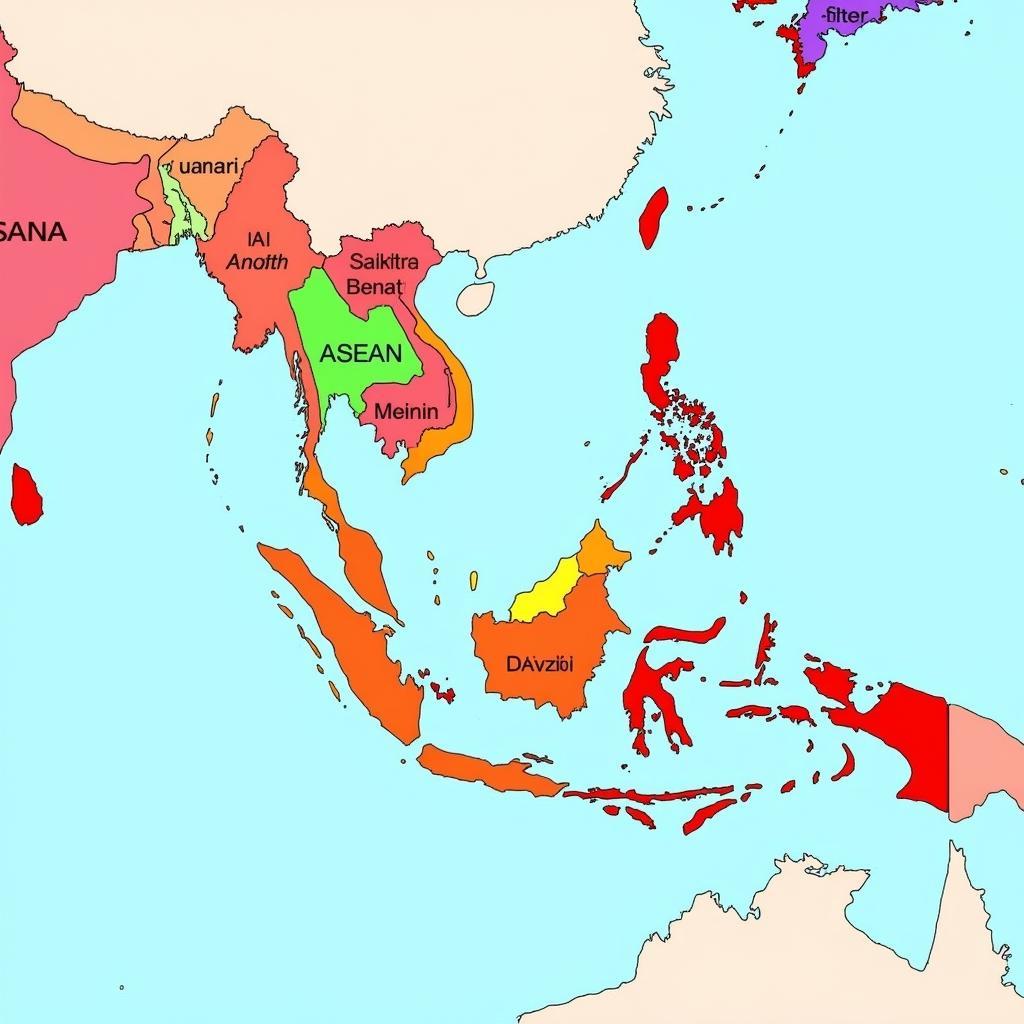Understanding ASEAN’s role in the global landscape is crucial for AP Human Geography students. This guide provides an in-depth look at ASEAN, its member states, and its importance within the context of APHG.
What is ASEAN?
ASEAN, the Association of Southeast Asian Nations, is a regional intergovernmental organization comprising ten Southeast Asian countries: Brunei, Cambodia, Indonesia, Laos, Malaysia, Myanmar, the Philippines, Singapore, Thailand, and Vietnam. Established on August 8, 1967, ASEAN promotes political, economic, and socio-cultural cooperation among its members. Its primary goals include accelerating economic growth, social progress, cultural development, and regional peace and stability. For APHG students, ASEAN represents a key example of regional economic integration and its impact on political geography.
 Map of ASEAN Member States
Map of ASEAN Member States
ASEAN’s Economic Significance in APHG
ASEAN plays a significant role in the global economy. The region boasts a diverse range of industries, from manufacturing and tourism to agriculture and technology. The ASEAN Economic Community (AEC) aims to create a single market and production base, allowing for the free flow of goods, services, investments, skilled labor, and freer flow of capital. This economic integration is a key topic in APHG, as it demonstrates the impact of supranational organizations on regional development and globalization.
Understanding the ASEAN Free Trade Area (AFTA)
A core component of the AEC is AFTA, the ASEAN Free Trade Area. AFTA has significantly reduced tariffs and non-tariff barriers among member states, facilitating intra-ASEAN trade. This has led to increased economic interdependence within the region and made ASEAN a more attractive destination for foreign investment. APHG students should analyze how AFTA contributes to the overall process of globalization and its impact on regional economies.
ASEAN’s Political Landscape: A Focus for APHG
ASEAN’s political landscape is complex and dynamic. While the organization promotes regional cooperation and peaceful conflict resolution, member states maintain their sovereignty and individual political systems. This delicate balance of cooperation and autonomy presents a unique case study for APHG students exploring the complexities of international relations and geopolitical dynamics.
ASEAN and Regional Security
ASEAN also plays a vital role in maintaining regional security. The organization addresses common security concerns such as terrorism, piracy, and transnational crime through various mechanisms, including joint military exercises and intelligence sharing. For APHG students, this highlights the importance of regional alliances in addressing shared security challenges.
ASEAN’s Socio-Cultural Diversity
ASEAN is a melting pot of cultures, languages, and religions. This diversity, while a source of strength, also presents challenges for regional integration. Understanding these socio-cultural dynamics is essential for APHG students studying cultural geography and the impact of globalization on cultural landscapes.
Conclusion: ASEAN’s Significance in AP Human Geography
ASEAN provides a rich and complex case study for AP Human Geography students. From its economic integration and political dynamics to its socio-cultural diversity and security concerns, ASEAN offers valuable insights into the forces shaping the global landscape. Understanding ASEAN is key to grasping the core concepts of APHG and preparing for the AP exam.
FAQs about ASEAN in APHG
- What is ASEAN’s role in globalization?
- How does AFTA impact ASEAN economies?
- What are the main political challenges facing ASEAN?
- How does ASEAN promote regional security?
- What is the significance of ASEAN’s cultural diversity?
- How does studying ASEAN contribute to understanding APHG concepts?
- What are some examples of ASEAN’s impact on the global stage?
Need support? Contact us 24/7: Phone: 0369020373, Email: [email protected], or visit us at Ngoc Lien Village, Hiep Hoa, Bac Giang, Vietnam.

